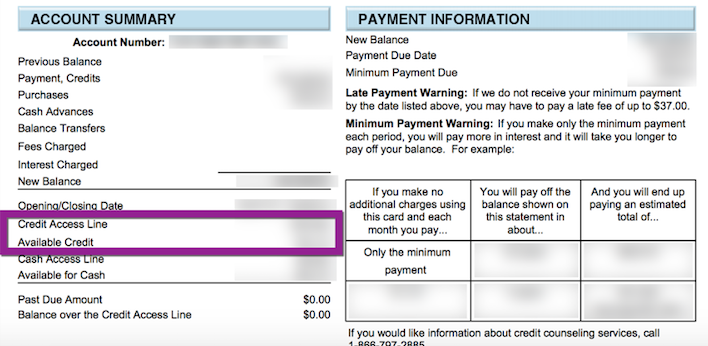At Experian, one of our priorities is consumer credit and finance education. This post may contain links and references to one or more of our partners, but we provide an objective view to help you make the best decisions. For more information, see our Editorial Policy.
A credit card limit is essentially the size of the loan a credit card issuer agrees to extend to you. Most credit card accounts have a credit card limit that appears on your statement, but often it's not a hard limit that you must stay within.
Other cards that have no preset spending limit will approve or decline individual charges based on your creditworthiness at that time. While it can be a bit confusing, it's important to understand what credit card limits are, and how to work with them.
Your credit card limit will appear on any initial approval paperwork or information you receive when you open a credit card account. It also appears on your monthly statement, so it's easy to find. (Note: it may be listed on your statement as ‘Credit Access Line' or ‘Available Credit' as well.)

How a Credit Card Limit Works
When you apply for a credit card account, the credit card issuer will usually look at your credit report and your credit scores. It will use this information to make a decision to approve or decline your application, and will also decide how large of a line of credit to give you.
Having a high income, excellent credit, and little debt will make it more likely that you will receive a large line of credit. But if you fail to have any one of those three things, then the credit card issuer will give you a lower line of credit to limit its risk of loss if you fail to repay your loan.
Can You Go Over Your Credit Card Limit?
Credit card issuers will often let you make charges that exceed your published credit limit on a case-by-case basis. Thankfully, there are few, if any card issuers that still impose an over-the-limit fee. Furthermore, a few credit card issuers, such as American Express, offer products with no preset spending limit.
In essence, with these cards every charge you make is evaluated against your account history, and its most recent copy of your credit history and credit scores. This can give you the flexibility to make large purchases when needed, but it also presents cardholders with the uncertainty of not knowing when a charge will be approved or declined.
Managing Your Credit Card Limits
While it may feel like your credit card limit is set by the credit card issuer and that you have no control over it, there are actually there are three things you can do to manage your lines of credit:
- You can always contact your credit card issuer to pre-approve your purchases. Whether a purchase exceeds your line of credit, or you have a credit card with no preset spending limit, you can call the card issuer and be told if a charge of a certain amount will be approved or declined. Needless to say, this will prevent any uncertainty when you need to make a purchase.
- You are free to ask for a credit card limit increase from your credit card issuers. Some issuers will ask that your account be open for at least a year before granting a credit line increase. Often, a card issuer will ask you to update your financial information such as your income and your housing expenses before considering a request to increase your credit line.
- Many credit card issuers will allow you to reallocate your lines of credit between different cards. For example, if you have a $2000 credit limit on one card and a $10,000 credit limit on a different one, you might ask for $4000 to be moved to the other card so that you can use it to make more purchases without going over its credit limit. Card issuers will usually grant these requests as it helps their customers to use their cards without impacting the issuer's exposure to loss in the event of default.
How Credit Card Limits Affect Your Credit Score
One of the key factors in your credit scores is your total amount of debt. One way that credit scoring models can measure this is by calculating your debt-to-credit ratio, also known as your credit utilization ratio.
This is the ratio of the total amount of debt you have, divided by the total amount of credit that you've been extended. By having a larger total credit limit on all of your credit cards combined, you will lower your credit utilization ratio for a given amount of debt.
By increasing your credit limits on your credit card, or opening new accounts with additional credit limits, you'll thereby lower your credit utilization ratio so long as you don't incur any further debt. This is why it can help to leave credit card accounts open and in good standing, even if they are used infrequently. It also explains why asking for credit limit increases can have a beneficial effect on your credit scores.
Once you understand how your credit card limits work, then you can take steps to manage them effectively to create more purchasing power and to improve your credit.

